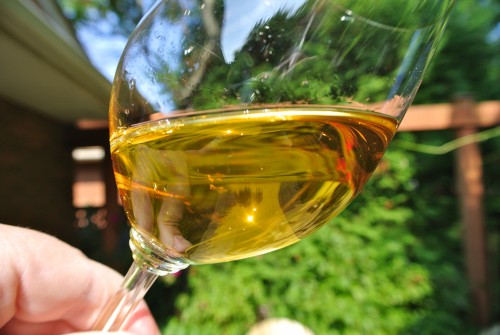 Older wine, slowly matured naturally in a well-designed cellar, is the thing that really excites me about the vinous world.
Older wine, slowly matured naturally in a well-designed cellar, is the thing that really excites me about the vinous world.
I am in awe every time I open an older vintage wine that has not only stood the test of time, but has also benefited from a tour of duty in the cellar.
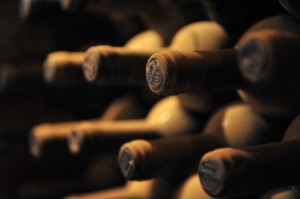 The wines I gravitate toward tend to be those that I can age for five, 10 and 20 years or more. These wines bring pleasure, the way they have grown up, integrated and evolved to reveal those interesting tertiary flavours and nuances you just don’t get with a young wine.
The wines I gravitate toward tend to be those that I can age for five, 10 and 20 years or more. These wines bring pleasure, the way they have grown up, integrated and evolved to reveal those interesting tertiary flavours and nuances you just don’t get with a young wine.
It is no wonder I love Bordeaux. It was one of the first regions that caught my full attention at a young age. Even the Cru Bourgeois and lesser satellite appellations were more interesting after shedding all that baby fat. I learned quickly that drinking Bordeaux on release was foolish as they are just too tannic, too firm and totally out of balance. But age those wines for a few years and magic happens.
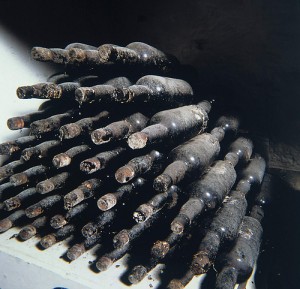 It’s the same with Riesling, at least GOOD Riesling, the ones made with natural high acidity and at least some residual sugar. Try a 30-year-old German Riesling from a good producer and you will never drink a young Riesling again. That, to a lesser degree, is true with Niagara Rieslings; I never drink them without at least some bottle age.
It’s the same with Riesling, at least GOOD Riesling, the ones made with natural high acidity and at least some residual sugar. Try a 30-year-old German Riesling from a good producer and you will never drink a young Riesling again. That, to a lesser degree, is true with Niagara Rieslings; I never drink them without at least some bottle age.
It’s the same with Burgundy, both red and white, Aussie Shiraz and Semillon, Italian reds (most of them), Spanish reds, Napa Valley reds and too many others to list here.
And it certainly holds true for Niagara red blends made with the traditional Bordeaux varieties of Cabernet Sauvignon, Merlot and Cabernet Franc (in the warm years).
But how long is long enough for Niagara wines? We (or at lease, I) don’t know. There just isn’t enough older Niagara wines kicking around. There is no tradition of holding back wines for release at a later date and those who did collect those wines “back in the day” are far and few between. And then there’s this: We have a short history of wine in Canada.
 A nearly 50-year moratorium on issuing new winery licences wasn’t lifted until 1974 following prohibition. It was during the 70s that wineries began planting vinifera grapes but it wouldn’t be until 1988, with free trade established, the VQA standard was implemented, and a major grape vine replacement/upgrading program began that widespread quality winemaking began in earnest.
A nearly 50-year moratorium on issuing new winery licences wasn’t lifted until 1974 following prohibition. It was during the 70s that wineries began planting vinifera grapes but it wouldn’t be until 1988, with free trade established, the VQA standard was implemented, and a major grape vine replacement/upgrading program began that widespread quality winemaking began in earnest.
There were a select few wineries making some outstanding vinifera-based wines in the 1970s, but it wasn’t until the 80s that the present-day wine industry began exploding.
But finding those wines today is tough. Finding them in pristine condition nearly impossible.
And then there is the mystery, if you do find them, what’s inside the bottle and how did those pioneers of winemaking in Canada construct the wines? Were they looking for wines that aged or wines that appealed to consumers right out of the bottle? They had the raw materials to work with: high acidity, tannins and, in good years, the ability to ripen the red varietals.
Over the next year or so, I will be digging into some older Niagara reds, whites and sweeties to see how they have matured.
In this occasional series called #oldniagara I will look at a different bottle from a wide range of styles and wineries. I will taste the wine, review the wine and try and find some history for each bottle whether it stood the test of time or not.
This first installment is from 1989.
Bottle No. 1 #oldniagara
Stoney Ridge Cellars Plekan Vineyard Late Harvest Riesling 1989 (Price on release $9.25, 9% alcohol)
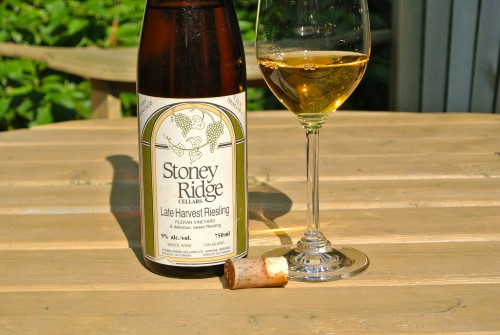 You’ll see Jim Warren’s name a lot in these postings on older Niagara wines. He founded Stoney Ridge Estate Winery in 1985 and held the position of president and winemaker until 1999.
You’ll see Jim Warren’s name a lot in these postings on older Niagara wines. He founded Stoney Ridge Estate Winery in 1985 and held the position of president and winemaker until 1999.
 Warren is a highly decorated amateur and professional winemaker and is one of the most notable figures in Ontario winemaking history.
Warren is a highly decorated amateur and professional winemaker and is one of the most notable figures in Ontario winemaking history.
He spent a long on-and-off career at Stoney Ridge, was the executive director of the Fruit Wines of Ontario Association and was Professor of Winemaking at Niagara College’s Teaching Winery.
In 1982 Warren was voted Man of the Year by the Ontario Grape Grower and Marketing Board, and in 1997 he was named Ontario Winemaker of the Year.
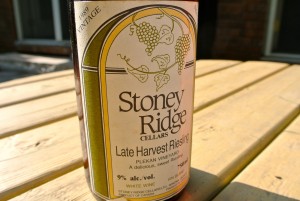 The fruit for this late harvest Riesling was sourced from the Plekan Vineyard, a site located on the Niagara Escarpment on the Beamsville Bench, and owned by Mike and Mimi Plekan (I got this information from author and wine writer Konrad Ejbich and tried to reach Mike Plekan for this post). The site, situated near the Cave Spring Vineyard, overlooks Lake Ontario, an area that has been proven ideal for cool-climate viticulture. Derived primarily from escarpment limestone, shale and sandstone, these stony clay tills are rich in minerals, yet limited in organic matter, creating the perfect balance of nutrients for growing grapes displaying character and sophistication.
The fruit for this late harvest Riesling was sourced from the Plekan Vineyard, a site located on the Niagara Escarpment on the Beamsville Bench, and owned by Mike and Mimi Plekan (I got this information from author and wine writer Konrad Ejbich and tried to reach Mike Plekan for this post). The site, situated near the Cave Spring Vineyard, overlooks Lake Ontario, an area that has been proven ideal for cool-climate viticulture. Derived primarily from escarpment limestone, shale and sandstone, these stony clay tills are rich in minerals, yet limited in organic matter, creating the perfect balance of nutrients for growing grapes displaying character and sophistication.
I was not expecting much from this wine and even less so when the cork slid easily from the bottle. I noticed the cork was a lot shorter than corks used today but it was in perfect condition and there was very little ullage (or evaporation) of the wine.
The colour was a rich, golden amber and the first aromas were of wild honey, sweet apricot, cinnamon-toffee, dried tropical fruits and lemon curd. It was mellow and soft on the palate, viscous and fleshy, with the acidity now completely engulfed by the sweet fruit. But, my, oh, my, what flavours remained: Exquisite lemon custard, mango-apricot, cinnamon toast, honey and peach preserve. It is on its downward slide, lacking the acid to carry it much further, but a truly great experience for an older late-vintage sweetie.
Next in the series: Marynissen Cabernet Sauvignon Lot 31 (A) 1991.






Hi Rick
Interested to see your post on the 1989 Riesling and a tribute to Jim Warrens legacy. I can add to that legacy as last night I opened a 1987 Late Harvest Vidal, Weylie Vineyard, Limited Edition and can report that it was alive and well!!! It was amber in colour. bright and not tired looking. The nose was very fresh smelling, not a hint of oxidation, smelled of honey, very ripe peach, and some spice. Very soft and sweet on the palate with still some acidity on the edges, enough to keep it interesting and not cloying. To say I was shocked by its vibrancy is an understatement. I was left wondering if the wine was at its peak or ……. I was motivated to open it as it was starting to weep a bit through its very short cork that was removed easily. The bottle is 750ml, 11.6% and the same style of label as the 1989. Perhaps through you Jim Warren will learn of this triumph, I have many memories of his early accomplishments in the 80’s.
This was one of quite a number of bottles I acquired in the mid to late 80’s for my cellar just to see “what would happen” over time. I still have Hillebrand 1987 Late Harvest Vidal and an Eiswein of the same year, ditto Inniskillen and a ’85 from the Braeburn Vineyard. A bunch of reds from ’85 to ’90. Plus some more.
I am at an age that there should be some urgency in letting these wines see the light of day.
David Nasby
David, Thanks for sharing you experience with Jim’s late harvest Vidal. Wine is such a magical elixir and when this sort of “cellar surprise” occurs it makes even more wondrous.